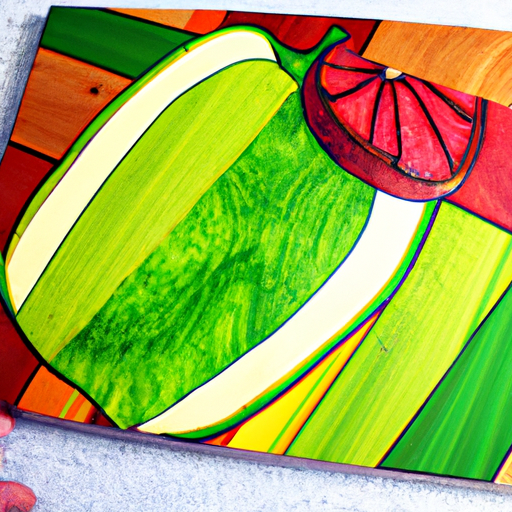When preparing for a craft fair or market, one of the most common questions that sellers ask is how much stock they should bring. It’s a valid concern – you want to have enough to make sales, but you also don’t want to be left with excess inventory. In this video, Deborah Engelmajer shares three formulas to help you determine the right amount of stock. The first formula focuses on breaking even, calculating the minimum amount of stock needed to cover costs. The second formula is based on revenue or profit goals, using the desired amount of money to determine the necessary stock. The third formula considers foot traffic or attendance to estimate sales. Deborah also suggests doubling the calculated numbers to account for variations in products and offers tips for a successful craft fair, such as offering different price points and building an email list.
Figuring out how much stock to bring to a craft fair or market can be a challenge, but Deborah Engelmajer is here to help. In this video, Deborah shares three formulas that you can use to determine the right amount of stock for your event. Whether you’re aiming to break even or have specific revenue or profit goals, these formulas will guide you in making informed decisions about how much stock to bring. Deborah also emphasizes the importance of experience and using the calculations as guidelines, noting that no rule is set in stone. So before you head to your next craft fair or market, be sure to check out this informative video to ensure you have just the right amount of stock!
Determining the Right Amount of Stock for a Craft Fair or Market
Introduction
When preparing for a craft fair or market, one of the most common questions sellers have is how much stock they should bring. It can be challenging to find the right balance between having enough to make sales and not ending up with excess inventory. In this article, we will explore three formulas that can help you determine the appropriate amount of stock for your next event. We will also discuss strategies for attracting customers, maintaining contact with potential buyers, and managing your inventory effectively.
Formula One: The Breaking Even Formula
The first formula we will discuss is what I like to call the “breaking even formula.” This formula helps you calculate the minimum amount of stock you need to cover your costs. To use this formula, you will need to add up all the expenses associated with attending the event, such as travel expenses, seller fees, booth setup, and marketing materials. Once you have determined the total cost, divide it by your average profit per product. This will give you the number of products you need to sell to cover your expenses.
Calculating the Minimum Amount of Stock Needed to Cover Costs
Let’s say you have determined that the total cost of attending an event is $500, and your average profit per product is $25. By dividing $500 by $25, you will find that you need to sell at least 20 products to break even. This formula provides you with a minimum benchmark to ensure you cover your costs.
Including Overheads and Expenses
When calculating your expenses, it is essential to consider all overheads and additional costs associated with the event. These costs may include accommodation, transportation, food, booth decorations, and marketing materials such as business cards and flyers. By accounting for these expenses, you can determine a more accurate amount of stock needed to cover all costs and make a profit.
Consideration of Sales Patterns
It is also crucial to consider sales patterns when determining the amount of stock to bring. Are there specific items that sell more quickly and consistently? By analyzing your sales data from previous events, you can identify popular products and adjust your stock accordingly. This will help you optimize your sales and make better predictions for future events.
Formula Two: Revenue or Profit Goals
The second formula we will explore is based on revenue or profit goals. This formula allows you to determine the necessary amount of stock based on the desired amount of money you want to make. Whether you have a revenue goal or a profit goal in mind, it’s essential to have a target in order to plan your inventory effectively.
Determining the Necessary Amount of Stock Based on Desired Earnings
Let’s say you want to make a revenue of $1,500 at an upcoming event, and your total expenses for attending the event are $500. By adding the revenue goal and the cost together, you get a total of $2,000. Next, divide this total by your average price point to determine the number of products you need to sell to reach your revenue goal.
Considering the Price Points of Products
When using the revenue or profit goal formula, it’s crucial to consider the price points of your products. Offering a variety of price points can attract a wider range of customers and increase your chances of making sales. While having higher-priced items can generate a higher profit margin, it’s also essential to offer lower-priced products that appeal to budget-conscious customers.
Formula Three: Estimating Sales Based on Foot Traffic
The third formula takes into account the foot traffic or attendance at the event. Although not all event organizers provide specific attendance numbers, larger events often have this information available. By estimating the number of people attending and applying a conversion rate, you can estimate the potential number of sales.
Using Event Attendance to Estimate the Number of Sales
To use this formula, multiply the expected foot traffic or attendance by the conversion rate (typically between 1% and 5%). This will give you an estimated number of sales based on the number of people attending the event.
Doubling the Calculated Numbers: Accounting for Variations and Avoiding Empty Booths
It is important to note that the numbers obtained from these formulas are just minimum estimates. To account for variations in products and to avoid an empty-looking booth, it is recommended to at least double the calculated numbers. This ensures that you have enough products to accommodate different price points, variations, and customer preferences.
Offering Different Price Points to Attract a Variety of Customers
As mentioned earlier, offering different price points is crucial to attract a variety of customers. Having a range of products with different price tags can help you cater to customers with varying budgets. This strategy increases the likelihood of making sales and appealing to a broader customer base.
Building an Email List and Utilizing Online Marketing
While attending a live event, it may seem odd to think about online marketing. However, it is essential to capitalize on the foot traffic and use it as an opportunity to grow your email list. You can have a sign-up sheet at your booth where potential customers can provide their email addresses in exchange for updates or discounts. This allows you to maintain contact with them after the event and continue marketing your products.
Maintaining Contact with Potential Customers
Building and maintaining an email list is a valuable asset for your business. By growing your email list at live events, you can reach out to potential customers with promotions, updates, and new product announcements. This strategy helps you stay connected and top of mind with your target audience, increasing the chance of future sales.
Keeping Excess Stock Below the Table and Refilling as Needed
When it comes to displaying your stock, it is essential to showcase your products effectively without overcrowding your booth. If you have excess stock, it is best to keep it below the table or in storage containers. This keeps your booth looking tidy and avoids overwhelming customers with too many options at once. As you make sales, you can quickly refill your booth to maintain the visual appeal and variety of products.
Importance of Using Calculations as Guidelines
While these formulas provide helpful guidelines, it is essential to remember that they are estimates based on historical data and averages. Each event and market is unique, and factors like customer preferences, market trends, and competition may influence your actual sales. Therefore, it is crucial to use these calculations as guidelines to inform your decision-making process rather than absolute rules.
Relying on Experience to Determine the Appropriate Amount of Stock
As you gain experience participating in craft fairs and markets, you will develop a better sense of how much stock you need for different events. Pay attention to your sales patterns, customer feedback, and market trends to adjust your inventory planning accordingly. Over time, your intuition and experience will become valuable tools in determining the appropriate amount of stock to bring to each event.
Conclusion
Preparing for a craft fair or market involves careful consideration of various factors, including your expenses, revenue or profit goals, foot traffic, and customer preferences. By using the formulas provided and adjusting them based on your experience, you can make informed decisions about how much stock to bring to each event. Remember to offer different price points, build your email list, and maintain contact with potential customers. By using these strategies, you can optimize your inventory planning, attract customers, and increase your chances of success at craft fairs and markets.



